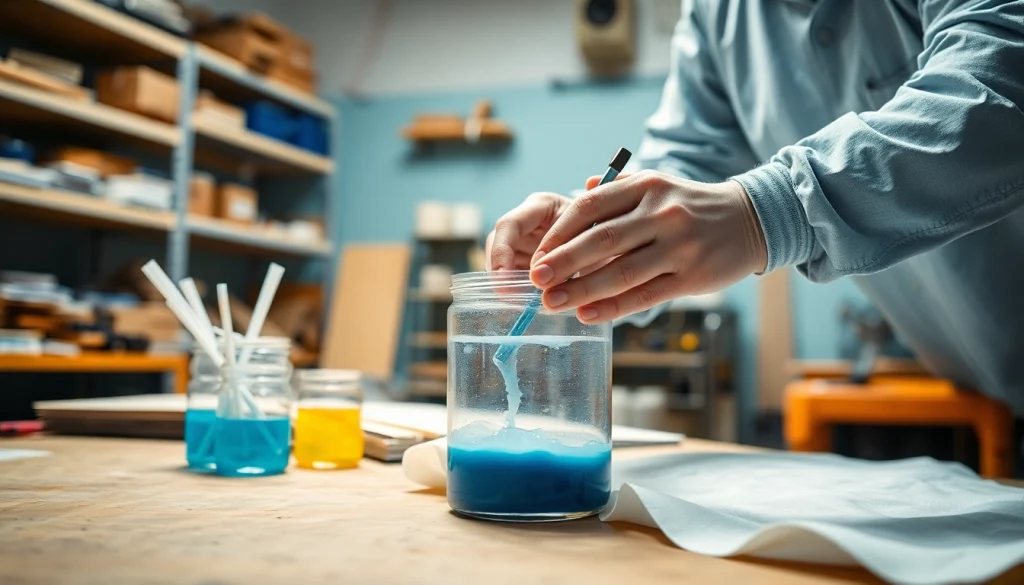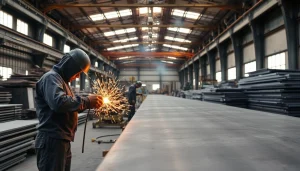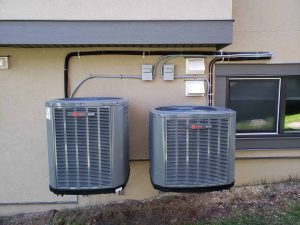Choosing the Right Laminating Resin: A Comprehensive Guide for Effective Application

Introduction to Laminating Resin
Laminating resin plays a crucial role in composite material preparation, boasting excellent strength, durability, and adaptability. This versatile substance is essential for various applications in industries ranging from marine construction to automotive and aerospace. Understanding the characteristics and optimal uses of laminating resin is vital for anyone looking to achieve the best results in their projects. In this guide, we will delve into the specificities of laminating resin, its various types, and the best practices for application to maximize performance and longevity.
What is Laminating Resin?
Laminating resin is a type of resin utilized chiefly in the lamination of composite material layers. It is engineered to create durable and robust structures by bonding various materials, often reinforcing them with fiberglass or other composite elements. Available primarily as polyester and epoxy types, laminating resins are formulated for significant applications in areas such as boat manufacturing, automotive parts, construction, and more.
Applications of Laminating Resin
The applications of laminating resin are extensive, spanning multiple fields:
- Marine Construction: Used to create hulls of boats and yachts, providing waterproof and strong structures.
- Automotive Parts: Common in manufacturing lightweight, strong components like fenders and body panels competing with traditional materials.
- Aerospace: Employed in the production of various lightweight components that enhance fuel efficiency.
- Construction: Used in creating panels and beams, ensuring structural integrity while maximizing weight efficiency.
- Art and Design: Artists and designers utilize laminating resin for creating unique sculptures and decorative pieces.
Benefits of Using Laminating Resin
The benefits of incorporating laminating resin into various applications are compelling:
- High Strength-to-Weight Ratio: Laminating resin provides exceptional strength without adding significant weight, making it ideal for applications where reducing weight is crucial.
- Corrosion Resistance: Many laminating resins exhibit excellent resistance to moisture, chemicals, and ultraviolet light, thereby prolonging the life of the final product.
- Easy to Use: Laminating resins typically offer straightforward application processes that allow for efficient layering and finishing.
- Customization: By altering the resin composition or combining with different materials, users can tailor the properties to meet specific project requirements.
Types of Laminating Resin
When selecting a laminating resin, it’s essential to understand the different types available, as they have unique properties suited for various applications.
Polyester Laminating Resin
Polyester laminating resin is one of the most commonly used types due to its cost-effectiveness and versatility. It is often employed in marine applications due to its favorable physical properties. Here are some key aspects:
- Cost: Generally less expensive than epoxy resins, making it an attractive option for large production runs.
- Curing Time: Quick curing allows for faster project completion, particularly advantageous in production environments.
- Durability: Provides a strong bond and can withstand various environmental challenges.
Epoxy Laminating Resin
Epoxy laminating resin, while typically more expensive, offers several advantages that make it a superior choice for high-performance applications:
- Adhesion: Superior bonding capabilities that provide excellent strength and durability.
- Flexibility: Enhanced flexibility which allows it to withstand impact without cracking.
- Lower Shrinkage: This translates to better dimensional stability, making it ideal for precision crafting.
Comparing Laminating Resin Types
Choosing between polyester and epoxy laminating resin ultimately depends on several factors, including project requirements, budget constraints, and specific performance objectives:
- Applications: Polyester is great for general applications and cost-sensitive projects, while epoxy is preferred when high performance and durability are necessary.
- Curing Characteristics: Polyester tends to cure faster, which is beneficial for quick projects, whereas epoxy takes longer but offers improved properties.
- Environmental Resistance: Epoxy typically holds up better to extreme temperatures and chemical exposure compared to polyester.
How to Select the Right Laminating Resin
Choosing the appropriate laminating resin for a project involves evaluating multiple elements. Here are key considerations to guide the selection process:
Evaluating Project Requirements
Start by determining the specific needs of your project:
- Type of Materials: Consider what materials will be combined and their compatibility with different types of resin.
- Physical Properties: Decide the required strength, flexibility, and bonding capability based on the intended application.
- Environmental Conditions: Analyze the expected environmental exposure such as moisture, UV exposure, and chemical contact.
Cost Considerations for Laminating Resin
Budget tends to be a deciding factor in resin selection. Polyester laminating resin typically provides a more economical choice for large-scale projects, while epoxy might require a higher upfront investment but can offer savings in longevity and performance over time. Weighing the initial costs against potential performance gains helps in making an informed choice.
Environmental Factors in Choosing Laminating Resin
Understanding the impact of environmental conditions is essential in selecting the right resin type. For example:
- Moisture: Determine if the application will be exposed to water or humid conditions, steering towards resins that boast excellent waterproof properties.
- UV Exposure: Choose a resin that can withstand UV degradation, which is critical for items exposed to sunlight.
Best Practices for Using Laminating Resin
To ensure optimal performance and results when using laminating resin, adhering to best practices during application is critical. Below are key steps to follow:
Preparation Techniques Before Application
Effective preparation is fundamental for the success of any lamination project:
- Surface Preparation: Ensure surfaces are clean, dry, and free from contaminants that could affect adhesion.
- Temperature Control: Maintain appropriate temperature and humidity levels during application to avoid complications with curing.
- Mixing Resins: Follow manufacturer guidelines for mixing catalyst and hardeners to ensure the correct chemical reaction.
Step-by-Step Application Process
The application of laminating resin generally follows a systematic process:
- Apply the Resin: Start with a thorough layer of laminating resin over the surface.
- Add Reinforcement: Lay down the fiberglass fabric evenly, ensuring complete saturation with resin.
- Apply Additional Layers: Repeat the process for subsequent layers as required, allowing for adequate curing time between applications.
Post-Application Maintenance Tips
Proper maintenance after application ensures the longevity of the laminated item:
- Initial Curing Time: Allow the laminated item to cure fully before subjecting it to stress or exposure.
- Inspect for Defects: Regular checks can help identify issues early and defer major problems.
- Cleaning: Keep surfaces clean and free from debris that may affect performance over time.
Common Issues and Troubleshooting
Occasionally, issues may arise during the lamination process. Understanding potential problems can prepare you for proactive solutions.
Identifying and Fixing Lamination Errors
Errors such as bubbles or uneven layers can compromise integrity. Here’s how to address them:
- Bubbles: If bubbles form, a thorough inspection and gentle reapplication of resin or vacuum removal may resolve issues.
- Curing Defects: For incomplete curing, ensure that environmental conditions are optimal for resin properties.
Understanding Resin Curing Times
Every type of laminating resin has its specific curing time, impacted by factors like temperature and humidity. Familiarity with these parameters ensures the material reaches proper strength before use.
Preventative Measures for Future Projects
To minimize potential issues in future lamination tasks, consider the following:
- Thorough Training: Ensure that all personnel involved in the application are well-versed in best practices.
- Consistent Quality Checks: Implement routine quality assurance checks to maintain standards throughout the production process.







